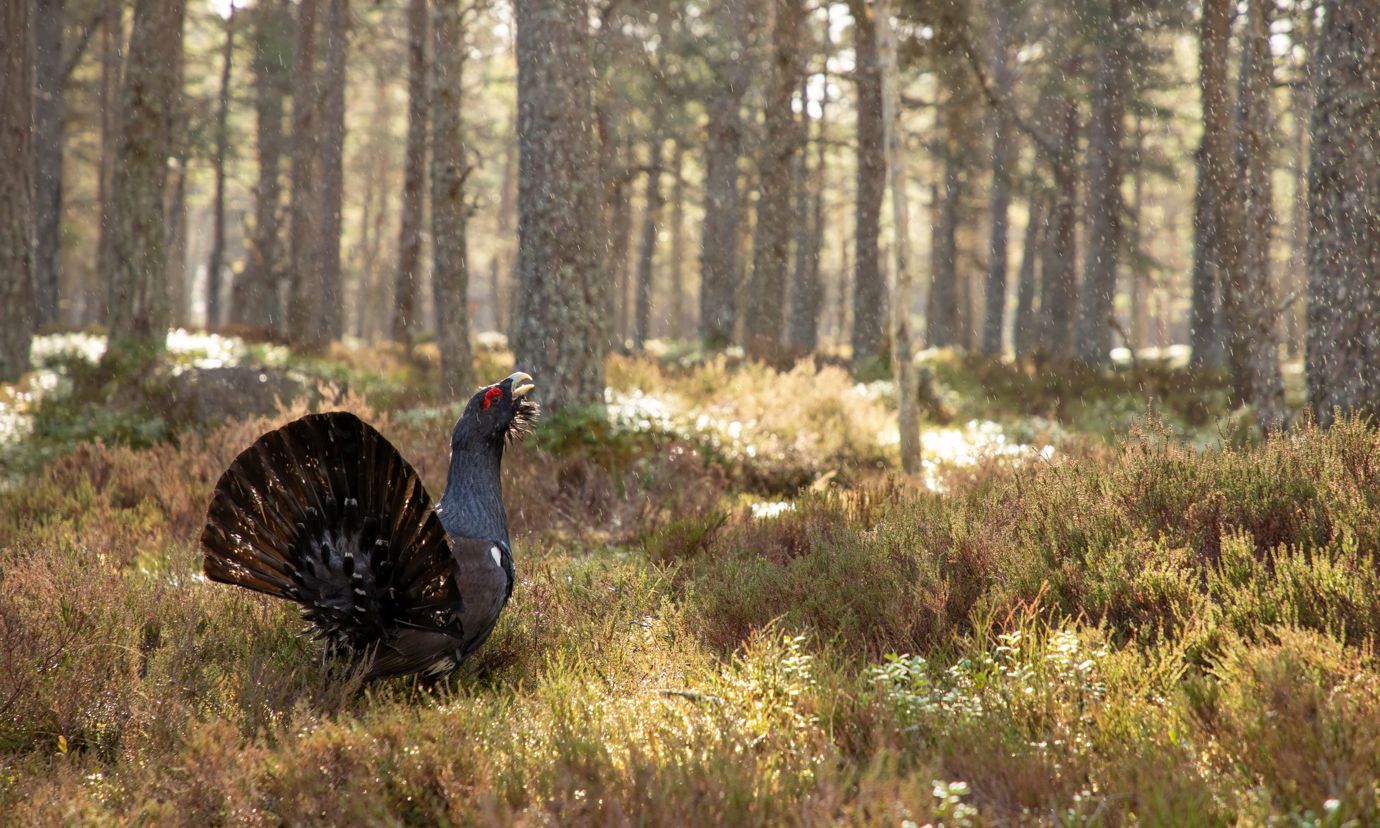Capercaillie
An iconic bird in Scotland, capercaillie have lived in the Scottish pine forests since the last Ice Age.
Research has shown that capercaillie tend to avoid areas near people. However, each year, Abernethy Forest, Rothiemurchus and Glenmore Forest Park receive over 1 million visits.
It is recognised that urgent action is necessary to build a long-term future for the species and that this action must involve the communities of the Cairngorms National Park, including businesses, land owners and managers, residents and visitors.
Building knowledge and insight
In response, the Cairngorms Capercaillie Project, funded by the National Lottery Heritage Fund, is capturing and using new data and research to help maximise visitor experiences and opportunities for capercaillie to thrive.
Over 1,200 visitors to Rothiemurchus, Abernethy National Nature Reserve and Glenmore Forest Park (including local residents) took part in research during 2021. The data gathered was used to create an insight-rich segmentation of visitors based on their motivations and values.
This segmentation and the insights are now being used to develop and maintain high quality sustainable visitor experiences that benefit the natural heritage of the Cairngorms National Park.
They have also been shared with businesses to support their promotion and visitor experience planning and enable them to share positive, inspiring and targeted messages that encourage responsible enjoyment.
By sharing the knowledge gathered, the project is enabling communities to make their own decisions about how they can help capercaillie while delivering an excellent experience for visitors.
Full details of the project and the data and insights gathered are available in the Cairngorms Capercaillie Project website
